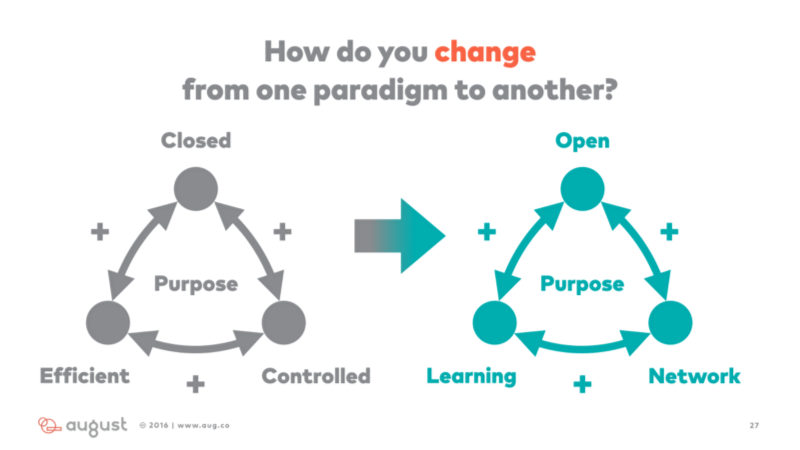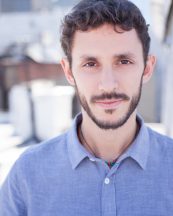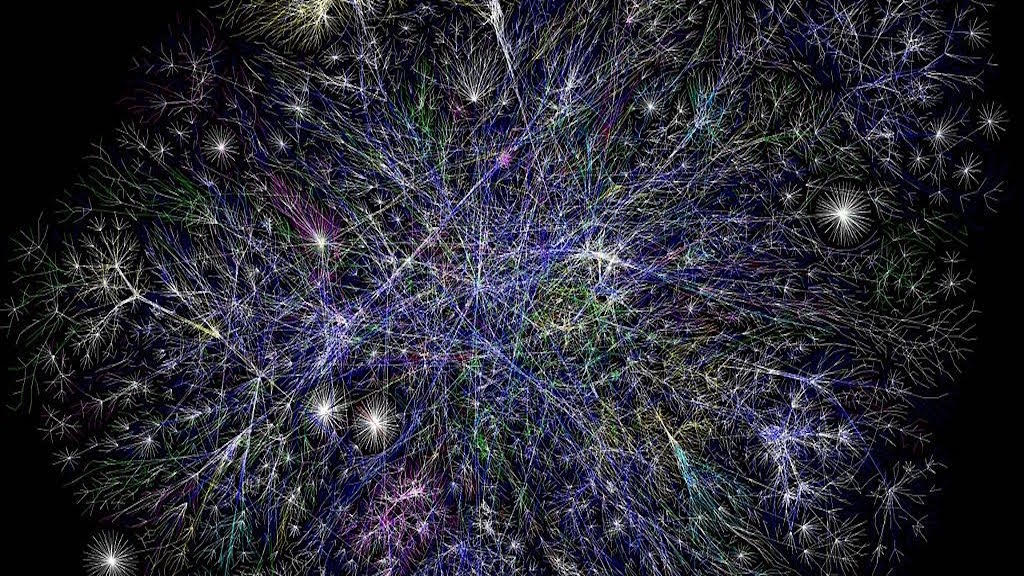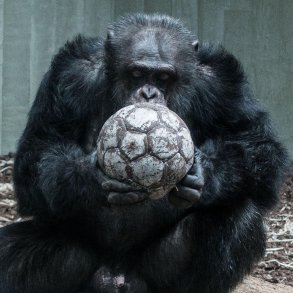Exploring the relationships between the work of Frederic Laloux, Otto Scharmer, and Thomas Hübl
By Michael Stern for Enlivening Edge Magazine
In the previous article, we explored the overlap between Laloux’s model of organizational development and Scharmer’s model of economic development. By combining insights from both models, we revealed how the “breakthroughs” of each new developmental stage emerge in response to a “primary societal challenge” that is created (in part) by the limitations and excesses of the previous stage.
I love maps! I find them super-helpful for making sense of the world and for skillfully navigating my own experience. But, as we know, “the map is not the territory,” so let’s take a closer look at the territory of our current societal challenges, and at some practices that support the breakthroughs of the next stage.
The Conditions for the Emergence of 4.0/Teal
According to Scharmer, the 4.0/Teal stage is currently emerging in response to the primary societal challenge of “global disruptive externalities and resilience.” In business and leadership circles this is commonly referred to as “VUCA” – Volatility, Uncertainty, Complexity, Ambiguity.
My guess is that everyone can relate to this in their own experience. Symptoms include feeling overwhelmed by the immense amount of information constantly bombarding us, anxiety/excitement about the exponential rate of technological advancement, and grief over climate change (to name a few).
Organizations must learn to adapt quickly in order to thrive in this new environment, which is paradoxically characterized by accelerating change while approaching the limits to growth.
The traditional power hierarchies (breakthroughs of the 1.0/Amber stage) no longer provide the stability they did in a time of slower technological and social change. The “predict and control” paradigm (associated with the 1.0/Traditional/Military and 2.0/Ego-centric/Machine organizations) has proven ineffective in the highly complex environment of an increasingly interconnected global society.
Therefore these older structures are gradually being replaced by the “sense and respond” paradigm of the 4.0/Eco-centric/Organism types of organizations. Variations of this emerging form of organizing include “Lean,” “Agile,” “Anti-fragile,” and “Responsive.” They all reflect the principles and behaviors of living systems: open, self-organizing systems that adapt to internal and external changes through feedback mechanisms that allow new information to be rapidly and reliably processed into meaningful change.
Learning about the dynamics of living systems has been catalytic for my understanding of our current societal challenges, and for my approach to thinking about how to address them.
Responsive Organizations and Response-ability
So how can we learn to function more like/as a healthy ecosystem at the individual, organizational, and societal level? What does it take to thrive in this new “VUCA” world?
In his presentation “The Future of Organizations is Responsive”, Mike Arauz (president of August and co-founder of Responsive.org) says what separates successful companies from everybody else is “optimizing for certainty versus optimizing for uncertainty.” When optimized for uncertainty, an organization functions as an “open learning network”—clearly a concept coherent with the characteristics of living systems.

Arauz also points out that computers excel at the functions associated with certainty, while humans are much better at “the least routine, most complex, most collaborative, most creative work.” When I let that sink in, I feel excited, empowered, and relieved.
This feeling is amplified by what Holacracy founder Brian Robertson says, “We humans have an incredible capacity to sense tensions, but we usually don’t have a forum to go to where we can reliably process those tensions into something useful. So the organization loses one of its most powerful forces for evolution.”
We can conclude that one primary function of 4.0/Teal organizations would be to liberate and empower our natural “response-ability”—our capacity to notice tensions (“a person’s felt sense that there is a gap between the current reality and a potential future”) and to act creatively and collaboratively to close that gap. The living system of the organization both nourishes and is nourished by the living system which is each human being in the organization.
Which brings us to another question: How do we optimize this essential and uniquely human capacity, individually and collectively?
Generative Listening & Transparent Communication
I like to think of our ability to sense tensions as a kind of “listening”—to ourselves, to others, and to the world around us.
Scharmer says, “One of the core ideas of Ego to Eco—and of Theory U—is that form follows attention or consciousness. We can change reality by changing the inner place [—or the quality of awareness —] from which we operate. The Matrix of Social Evolution (below) spells out what this looks like… At [the level of the individual]…the quality of listening is crucial.”

He goes on: “Level 4 is ‘generative listening.’ We often use the example of a jazz ensemble ‘in the flow’ to illustrate this capacity. When individual players can listen to their own instrument and to the whole at the same time, they are able to co-create something new together. In an organizational context this quality of listening allows people to innovate and act from the whole.”
Now that we have entered the territory of consciousness/awareness, we’ll turn our attention to the teachings and practices developed by Thomas Hübl, which he calls “Transparent Communication” —a deceptively simple name.
On one level of understanding, it refers to people communicating with authenticity, honesty, and vulnerability. The term is already being used in that sense within a business context. On a deeper level, it points to radical intimacy and directness with life and a profound ability to respond skillfully in every moment.
I’ve been studying and practicing with Thomas since 2011, and I consider him my spiritual teacher. My practice of Transparent Communication has granted me access to subtle fields of information which previously did not register in my conscious awareness.
I am also refining my ability to sense directly into the essence of a particular situation or dynamic, rather than getting caught up in the level of “symptoms.” Finally, I have enhanced sensitivity to the “intersubjective” dimension of life, the field of energy and information that exists in the relational space between individuals.
These capacities mirror the crucial functions of Scharmer’s 4.0 Eco-System Awareness. Shifting to 4.0 requires self-reflective awareness of ourselves, others, the larger system(s) in which we are embedded, and the relational space between parts of the system.
Through practices such as Generative Listening and Transparent Communication, we become able to more clearly see and feel the whole, to notice the emerging potential of the system/field, and to act from impulses that arise from that shared awareness.
Both Scharmer and Laloux base their work on the idea that the evolution of organizations, economics, and society, correlates with the evolution of consciousness.
As we transition into this next stage of human development, one of the most important (perhaps the most important) contributions we can make is to intentionally evolve our own consciousness through practice. It also seems to be a missing piece in many of the conversations about next stage organizations. (More on that in a future post.)
In Part 3 of this series, I will look more closely at Hübl’s teachings and how they contribute to understanding and participating in the evolutionary process at the individual, relational, organizational, and societal levels.

Michael Stern is the Founder and Director of Integral Alignment, a platform and community dedicated to the evolution of consciousness and culture. He is also a Partner at Enlivening Edge, where he energizes the roles of MailChimp Champ and General Circle Facilitator. Michael currently lives in mid-coast Maine USA, with his partner, Erin, and their daughter, Isla.
Featured Image/Graphic link by The Opte Project [CC BY 2.5 (http://creativecommons.org/licenses/by/2.5)], via Wikimedia Commons





“to intentionally evolve our own consciousness through practice …….seems to be a missing piece in many of the conversations about next stage organizations.”
I have been struck by this too.
Is this generally accepted or do some think it isn’t a missing piece or doesn’t need to be a piece ?
Hi Chris – Thanks for your comment, and sorry for the delay in my reply.
In my experience of talking with other people who are involved in the conversations I’m referring to, it appears that many (if not most) individuals are (1) very aware of the significance of developing individual consciousness, and (2) they also have some kind of “practice” to support their own development. I think a few things are happening that create the effect that it’s not a more explicit aspect of the broader conversation.
First, I think there is still a stigma when talking about something like “awareness” or “consciousness”, that it is New-Age, woo-woo, non-sense, that has no place in business. Of course, the Mindfulness movement is creating significant inroads here, but as anyone on a genuinely transformational path knows, mindfulness is really just the tip of the iceberg. Our culture has partially appropriated mindfulness as another way to feel good and cope with the stresses of modern life, instead of seeing it and using it as a radical practice to transform the reality we live in, both internally and externally.
Second, I think that Western culture has a very underdeveloped understanding of the inner science of the transformation of consciousness, and therefore it’s not easy to illuminate and articulate the precise workings of one’s interior and the effects that has on their organization. Psychology of course has some important insights to offer, but it does not address the topic of ultimate reality or true awakening/liberation/enlightenment/self-realization/etc. When you compare “our” (I’m using that term broadly and loosely) understanding of the mind with, say, the Tibetan culture, it’s basically the same difference as comparing our technological advances with that same culture, but in reverse. What would our world look like if we were able to synthesize the highest potentials of outer science as developed in the West since the Enlightenment with the highest potentials of inner science as developed through the world’s mystical traditions? I believe that’s where we’re going, if we don’t destroy ourselves first.
Finally, in my experience there is a cultural gap between the people who are interested in and committed to a path of interior development and the people who are interested in and committed to a path of exterior development. This gap is also closing, but for the most part our social structures have done a good job of polarizing the incentives of each path. My favorite people are the ones who are both highly effective at creating change in the world, yet also deeply grounded in something beyond their worldly pursuits, which also inspires and infuses those pursuits. And there are more and more of those people all the time. The concept of “sacred activism” is one I deeply resonate with in this regard.
One of the things I appreciate most about Scharmer’s work is his emphasis on awareness as the crucial leverage point, yet he integrates that perspective so thoroughly with his understanding of the evolution of external structures and systems. And Laloux definitely points to it with his notion of Wholeness, but i think there is a lot of great work left to be done to unpack what that really means.
I’m curious to hear your thoughts about anything I’ve shared here, or about your own experience that you said you’ve been struck by.
Thanks again for the comment!
Are you saying U Lab and Holocracy are Green or are they second tier technology Teal/yellow? Graves indicated a huge gap between green and Teal/yellow .
Thanks for your comment.
In my opinion the U process and Holacracy are more in the Teal/Yellow space than Green. In terms of Theory U, I think the emphasis on the eco-systems view, and the balance between Sensing and Prototyping, are what distinguish it from a Green process, which might tend to be more “flat” and overly oriented to the interiors to the exclusion of taking action. In terms of Holacracy, that structure and process is very clear about avoiding the “tyranny of consensus” and using Purpose as the fundamental driver of the governance and decision-making process. That being said, generally speaking, we are still in the very early days of discovering what it means to create “Teal” organizations, so there is still a lot of room for change and growth and defining what that looks and feels like.
What is your opinion? Do those technologies seem more Green to you? Are you aware of other examples that you consider to be more Teal/Yellow?
This is fantastic – did you ever write part 3? Very interested in the synthesis of Thomas Hubl’s work with Theory U.